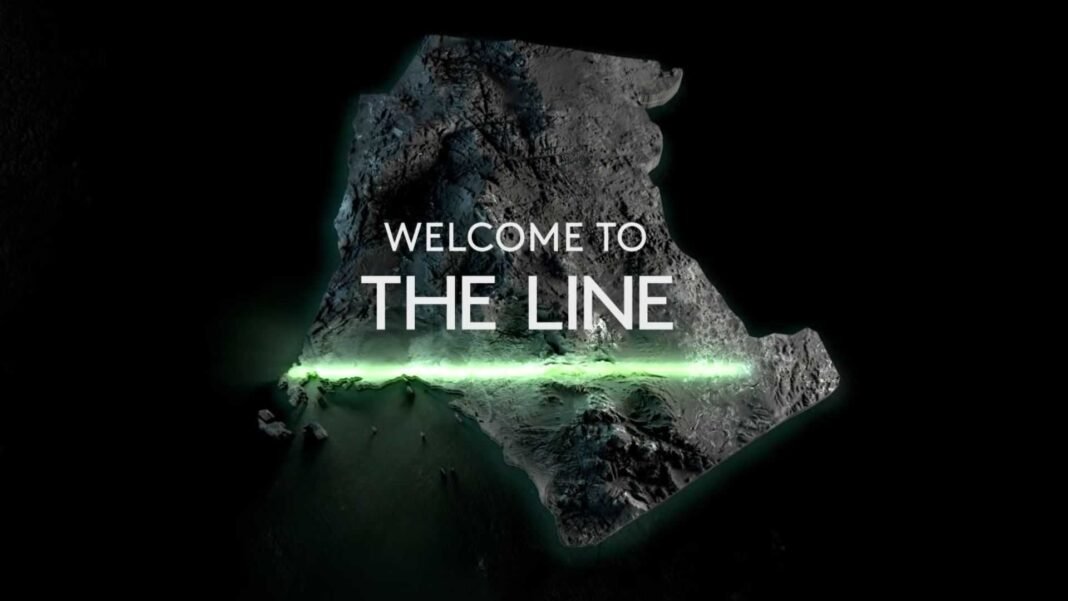Saudi Crown Prince announced The Line’s design, a zero carbon city that he plans to build at NEOM which costs between $100 to $200 billion.
Revealed in 2017, NEOM is Prince Mohammed’s plan to turn a desert the size of Belgium into a high-tech and sustainable megacity in Saudi Arabia’s northwestern corner.
It will be a linear metropolis with a ski resort and an industrial city that partially floats on water.
NEOM is one of the largest and most complex urban construction programs in the world. It spans 26,500-square-km (10,230-square-mile) on the Red Sea with several zones.
NEOM ’s business zone costing about $500 billion is for diversifying the economy of the top oil exporter. The kingdom’s sovereign wealth fund, the Public Investment Fund, is the cornerstone investor in NEOM.
The key purpose of building the region is to house the 10 million people that will overcrowd Riyadh. By 2030, the crown prince aims for 1.5 million people to live in “The Line”. That population will be 9 million by 2045.
The Line: A Zero-Carbon City in NEOM
The Line is a zero-carbon city within NEOM. It’s only 200 meters wide, but 170 kilometers long, and 500 meters above sea level.
Prince Mohammed first unveiled plans for the city in January last year. He said about it:
“The city’s vertically layered communities will challenge the traditional flat, horizontal cities… The designs of The Line embody how urban communities will be in the future in an environment free from roads, cars, and emissions.”
The Line will vertically layer homes, offices, public parks, and schools within a mirrored facade stretching over 170 km.
A new exhibit open to the public in Jeddah displays potential designs for “modules” of the twin buildings. They’ll be built in stages by global architecture firms. Popular names include LA-based Morphosis and UK-based Archigram.
The prince said last year that the project would cost $100 to $200 billion. There are no updated figures provided so far.
The environmental solution to urban living
The Line offers a new approach to urban design that’s based on the concept of Zero Gravity Urbanism. It refers to the idea of layering city functions in a vertical way while giving people the possibility of moving seamlessly in three dimensions – up, down, or across.
The urban concept is unique from just the tall buildings we know today. As it layers various facilities, one can move fast and with less effort to reach destinations within minutes.
- With no roads, cars or emissions, the zero-carbon city will run on 100% renewable energy while 95% of land will be preserved for nature. Unlike traditional cities, people’s health is a priority over transportation and infrastructure.
As The Line will have a footprint of only 34 square kilometers, it has a reduced emissions. Its design creates never-before-seen efficiencies in cities.
Plus, the city’s ideal climate all-year-round will ensure that residents can enjoy the surrounding nature. Tenants will also have access to all facilities within a 5-minute walk, a high-speed rail, with an end-to-end transit of 20 minutes.
The city’s zero-car environment is part of a 100% sustainable transport system – with zero pollution and zero wait time. As such, low commutes will give residents more time for leisure.
And the community will live close to, and in harmony with, nature, 95% of which is untouched by urbanization. The vertical garden city means people are always only a few minutes from nature.
In order to change business as usual, the city’s design is digitized and the construction is industrialized.
Overall, The Line’s zero carbon city offers its residents the following features:
- Work-life balance
- Legacy-free urbanism
- Enhanced livability
- Leisure and sports
- Vertical living
- Next-gen architecture
- Walkable communities
The announcement of The Line is a continuation of NEOM’s progress in its development. Its final construction will be done in 2025.
NEOM will begin engaging large potential investors by the end of this year. In fact, Saudi officials are talking to different companies around the world to invest and work with NEOM.
With The Line and NEOM at stake, the prince said that he’d be happy if he’ll achieve even just 50% of what he aims with this urban project.

